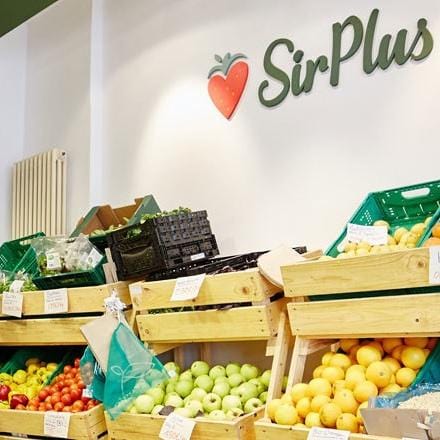GOAL: Halve food waste by 50% by 2030
 Author: Boris Messing
Author: Boris Messing
On January 8, 2018, we informed you about the REFOWAS study and its concluding conference, which will take place in mid-March of this year. Below, we would like to present two further international studies on food waste . Both the WWF study from 2015 and the ongoing REFRESH study aim to develop sustainable development goals for all stakeholders—policymakers, businesses, and consumers—that aim to halve food waste by 50% by 2030. This is also the stated goal of the German Federal Government. However, to date, a concrete plan for implementing this ambitious goal is lacking.
There are no standards for recording and attributing global food waste.
Global food waste is a problem with far-reaching consequences – for the environment (emissions, resource depletion, etc.), for the economy (sustainability, profitability, etc.), for politics (as a link between all stakeholders, as a partner in international agreements such as the Paris Climate Agreement, etc.), and not least, an ethical problem in light of the more than one billion people suffering from hunger worldwide. Although there have been many studies on food waste in the past, a comprehensive meta-analysis of the problem is difficult because methods and premises for measuring food waste vary from study to study. There are no standards for recording and categorizing global food waste. The REFRESH and WWF studies build on and integrate the results of previous studies, together reflecting the current state of research (although the final REFRESH results will not be published until the study concludes in 2019). The key findings of both studies are:
190kg of waste per person ends up in the trash every year.
 It is estimated that between 30% and 40% of all food worldwide ends up in the trash , with nearly half of that being wasted by consumers in industrialized countries. In Germany alone, this amounts to between 11 and 18 million tons of food, depending on the study. Or, put another way, 190 kg per person per year. According to the European Commission (as of 2015), one of the key partners of the REFRESH study, over 100 million tons of food are thrown away across Europe – a figure that is difficult to grasp. Perhaps it is easier to understand when one considers that this amount could feed all the world's hungry people twice over.
It is estimated that between 30% and 40% of all food worldwide ends up in the trash , with nearly half of that being wasted by consumers in industrialized countries. In Germany alone, this amounts to between 11 and 18 million tons of food, depending on the study. Or, put another way, 190 kg per person per year. According to the European Commission (as of 2015), one of the key partners of the REFRESH study, over 100 million tons of food are thrown away across Europe – a figure that is difficult to grasp. Perhaps it is easier to understand when one considers that this amount could feed all the world's hungry people twice over.
While food waste in emerging economies is mainly due to infrastructural problems (harvest and process losses), the situation in Western industrialized countries is exactly the opposite: hardly any food is lost through harvesting and processing; the majority of food waste falls on large consumers (catering, company kitchens, etc.), storage and logistics, wholesale and retail trade, and the end consumer.
The individual is called upon.

Consumers readily blame all problems on politics or unbridled economic interests. And there is no doubt that the German government and its European counterparts urgently need to take action regarding the immense food waste in the EU; the pressure to bring about a change grows with every study. Not only the 143 billion euros worth of food thrown away annually in Europe , but also the fact that food waste is the third largest source of carbon dioxide emissions , compels action if the 2017 Paris Climate Agreement is not to remain a mere footnote in history.
The same applies to the economy, where 60% of food is lost along the value chain. The WWF estimates that losses during harvesting and post-harvest (storage, logistics) and during food processing are almost unavoidable; however, both account for only a small proportion. A large portion of the waste could be avoided at the large-scale consumer level (70%) and in wholesale and retail trade (90%). It is precisely in these latter two sectors that one of the crux of the problem lies.
Due to consumer expectations regarding freshness, availability, appearance, and texture of food, supermarkets often throw away perfectly edible items; systematic overproduction ensures that shelves are always full. Consumer expectations of the "perfect product" force wholesalers and retailers to act accordingly. The "best before" date, which guarantees the aesthetic quality of the food, is not actually an expiration date; in most cases, the product remains edible for weeks or even years (we will discuss "best before" dates and the actual shelf life of food in more detail elsewhere). Individual consumers account for an estimated 40% of food waste, making them the largest group within the spectrum of food waste. The tonnage of avoidable losses is particularly high for grain products, fruits, and vegetables, and potatoes and dairy products are also lost to a considerable extent.
The main reasons for consumer dwindling:
- Poor shopping planning;
- Incorrect storage;
- Waste from food preparation;
- The best before date has expired;
- Leftover food that is not used.
Instead of waiting for a grand solution from politics and business, every single person can contribute to getting the problem of food waste under control.
Ecological footprint as large as Mecklenburg-Western Pomerania

WWF study (June 2015) :
http://www.wwf.de/fileadmin/fm-wwf/Publikationen-PDF/WWF_Studie_Das_grosse_Wegschmeissen.pdf
REFRESH study (July 2015 – June 2019) :
http://eu-refresh.org/



